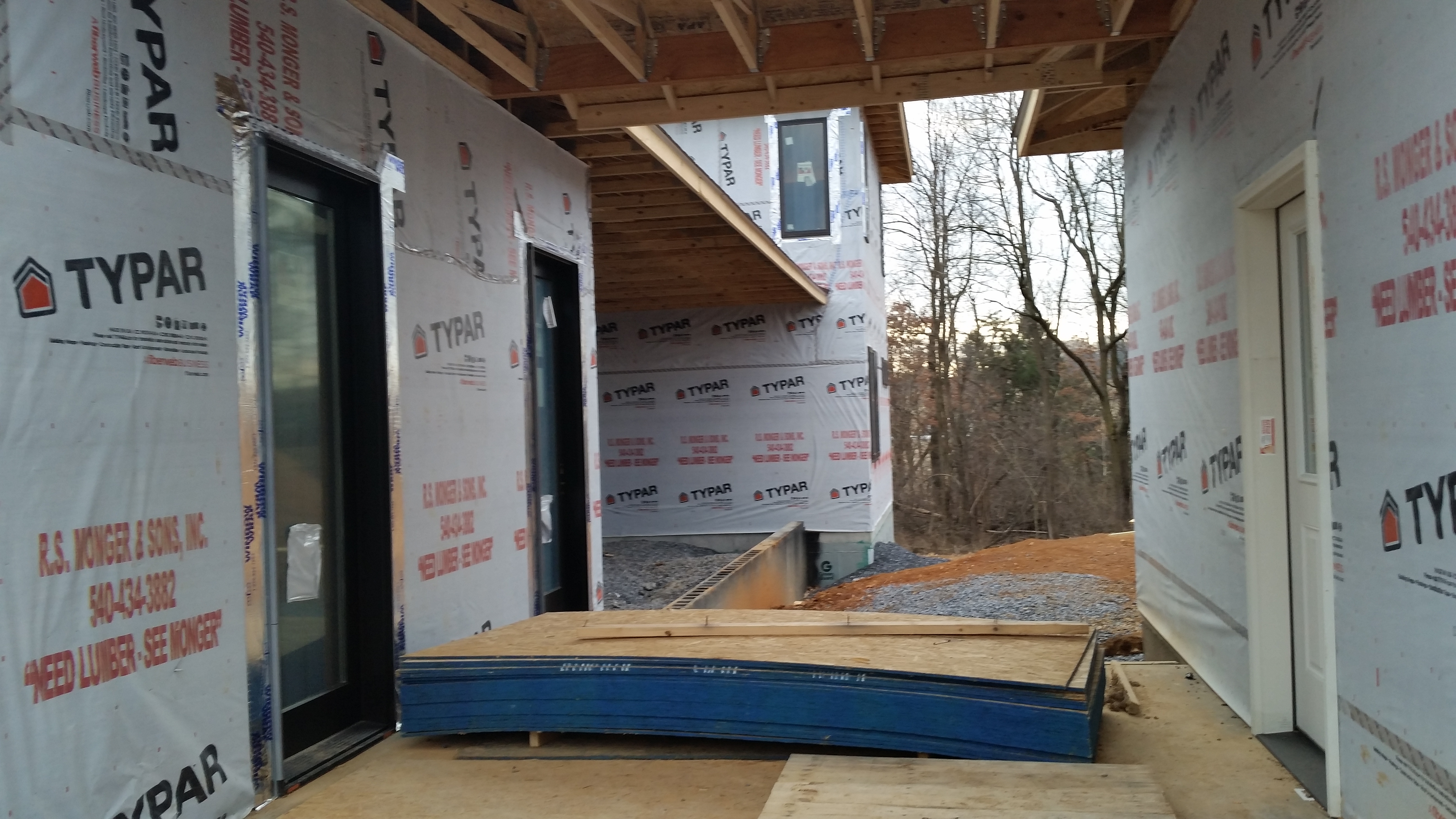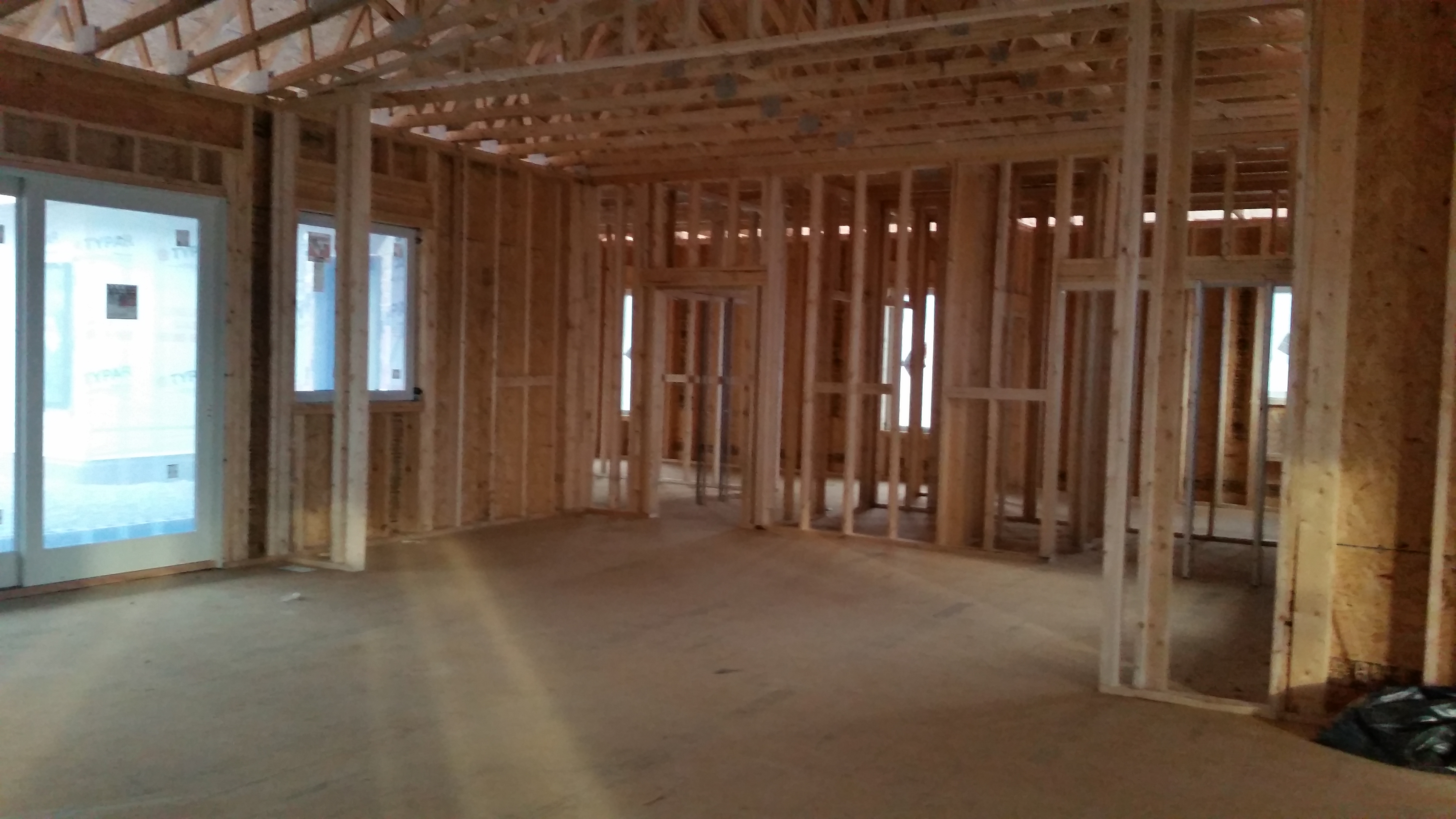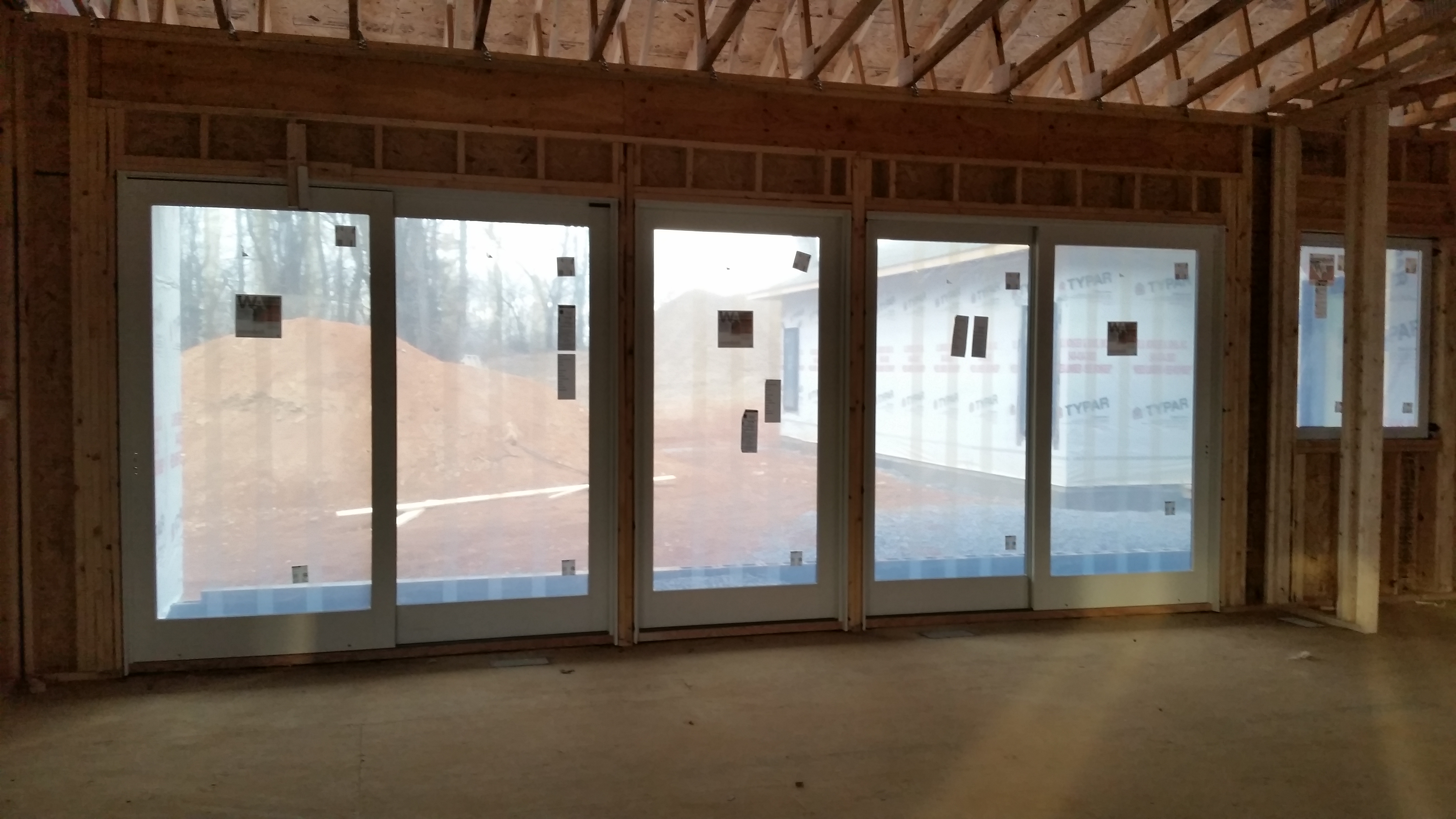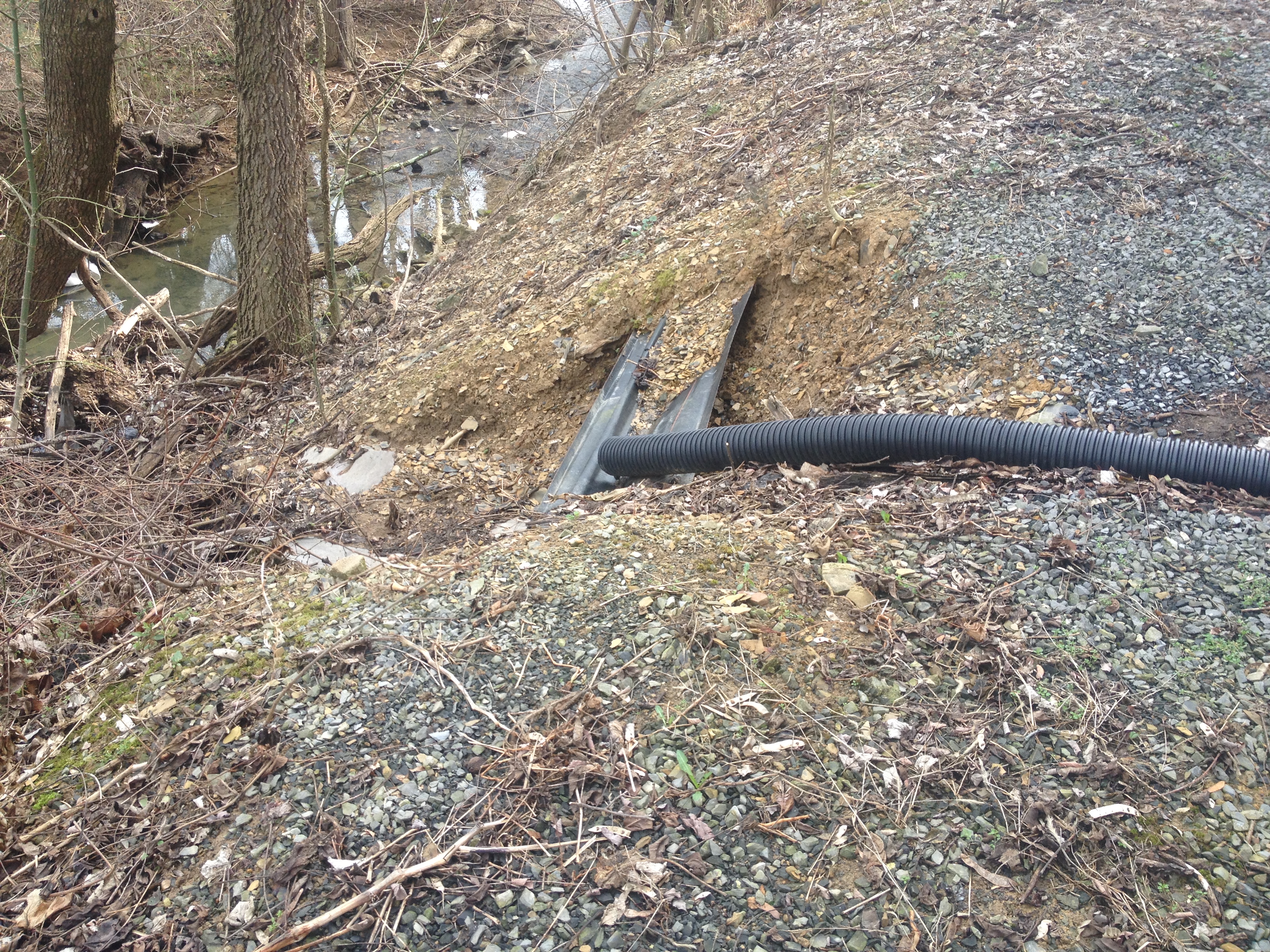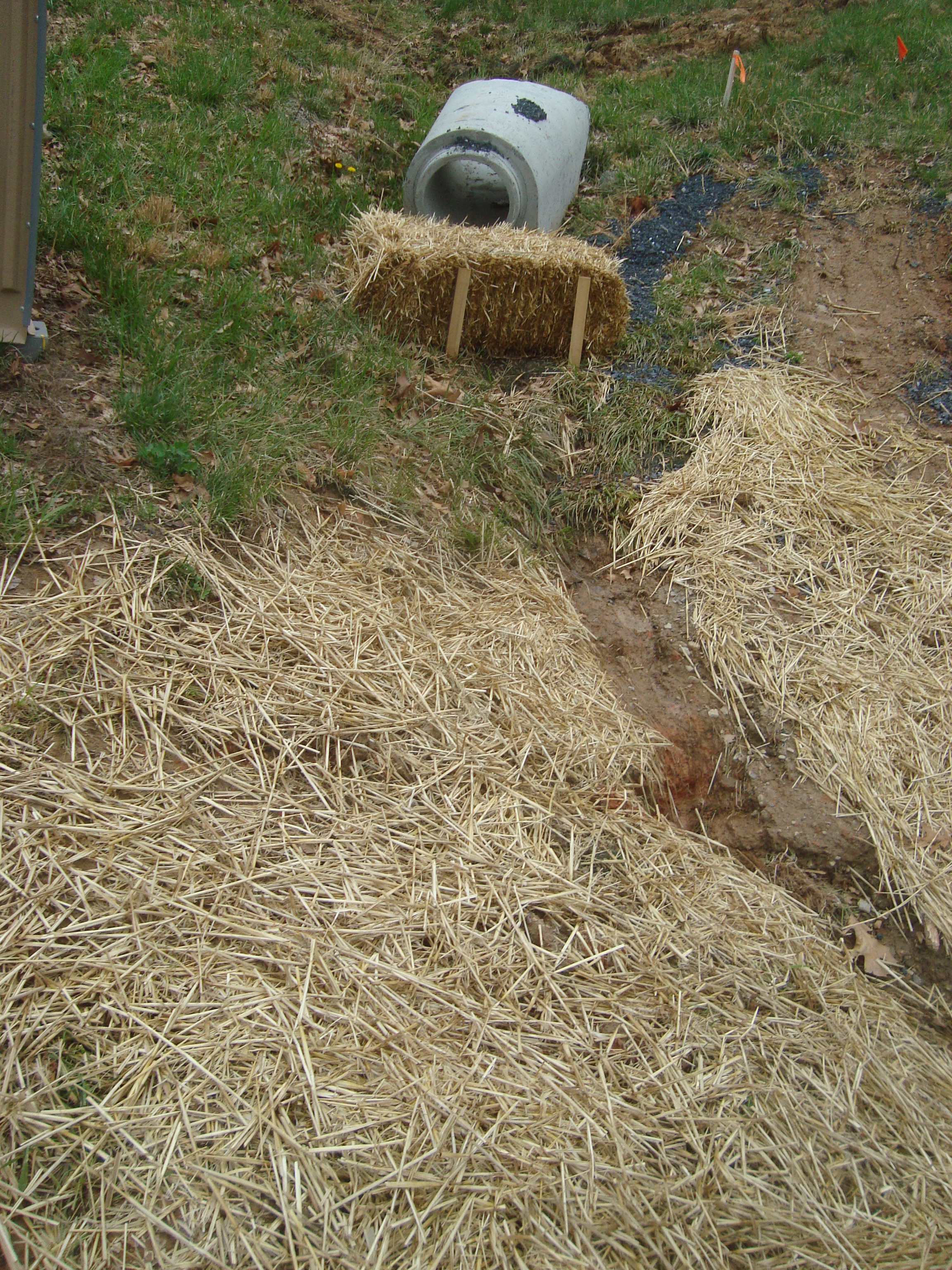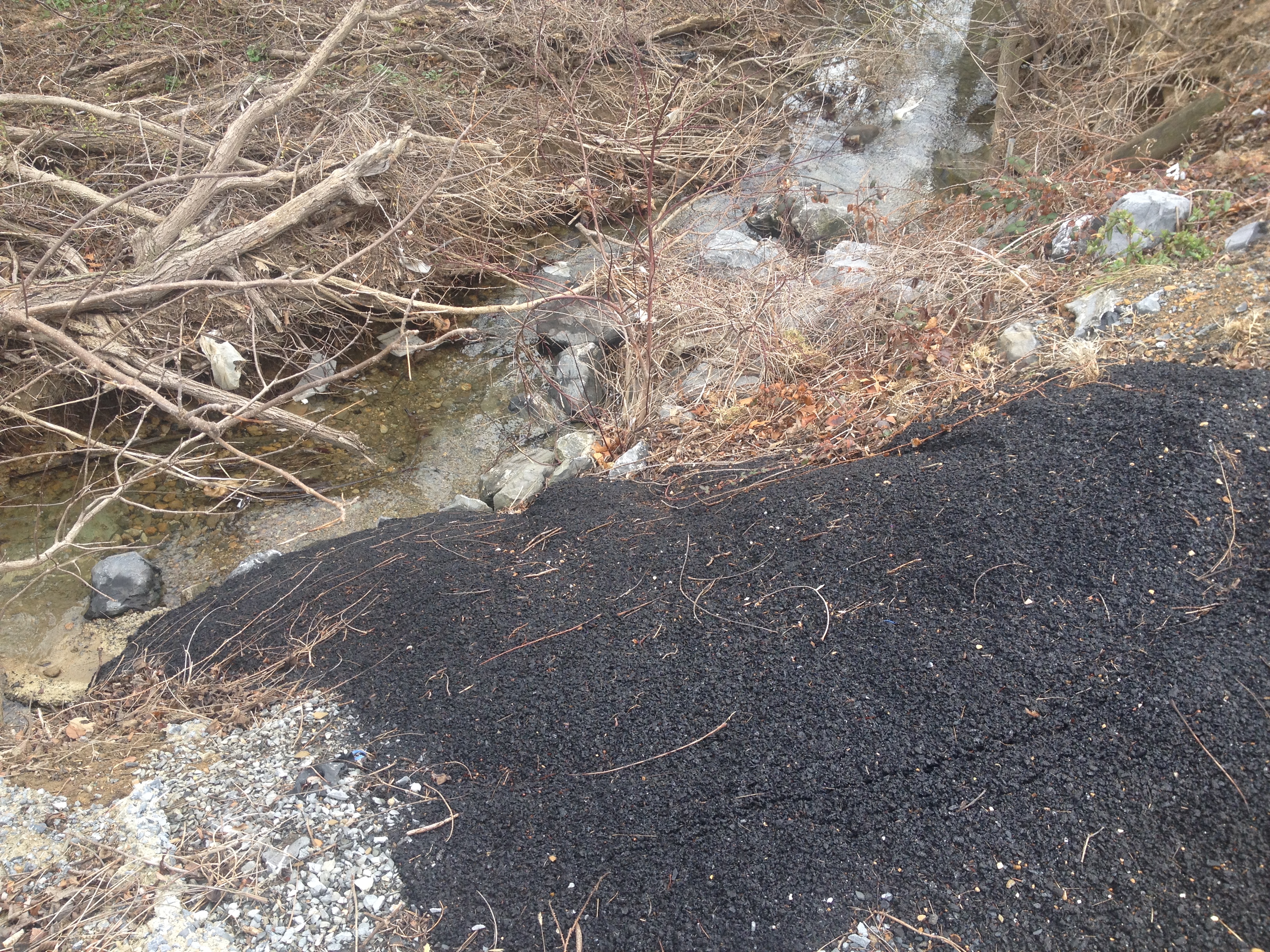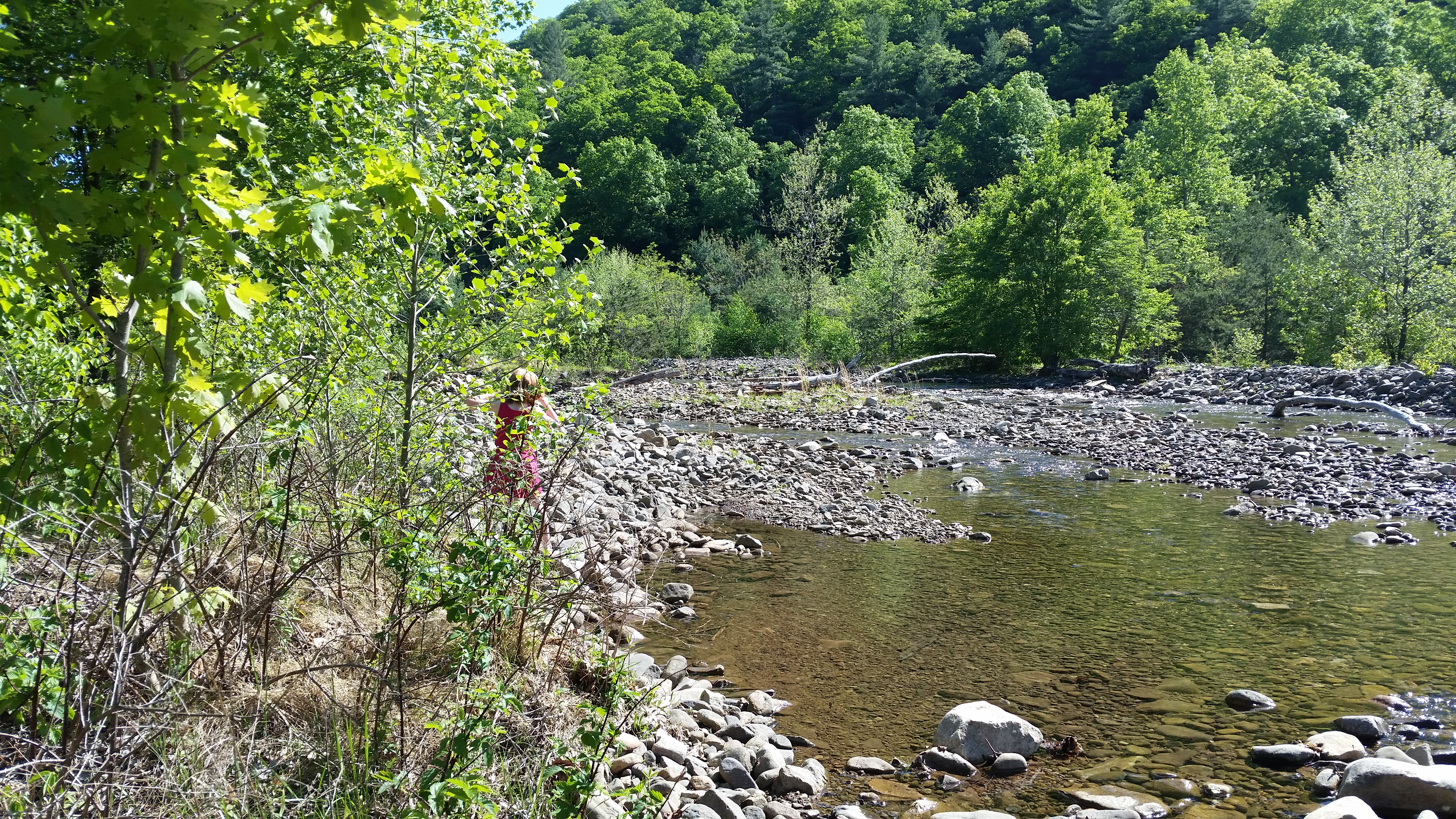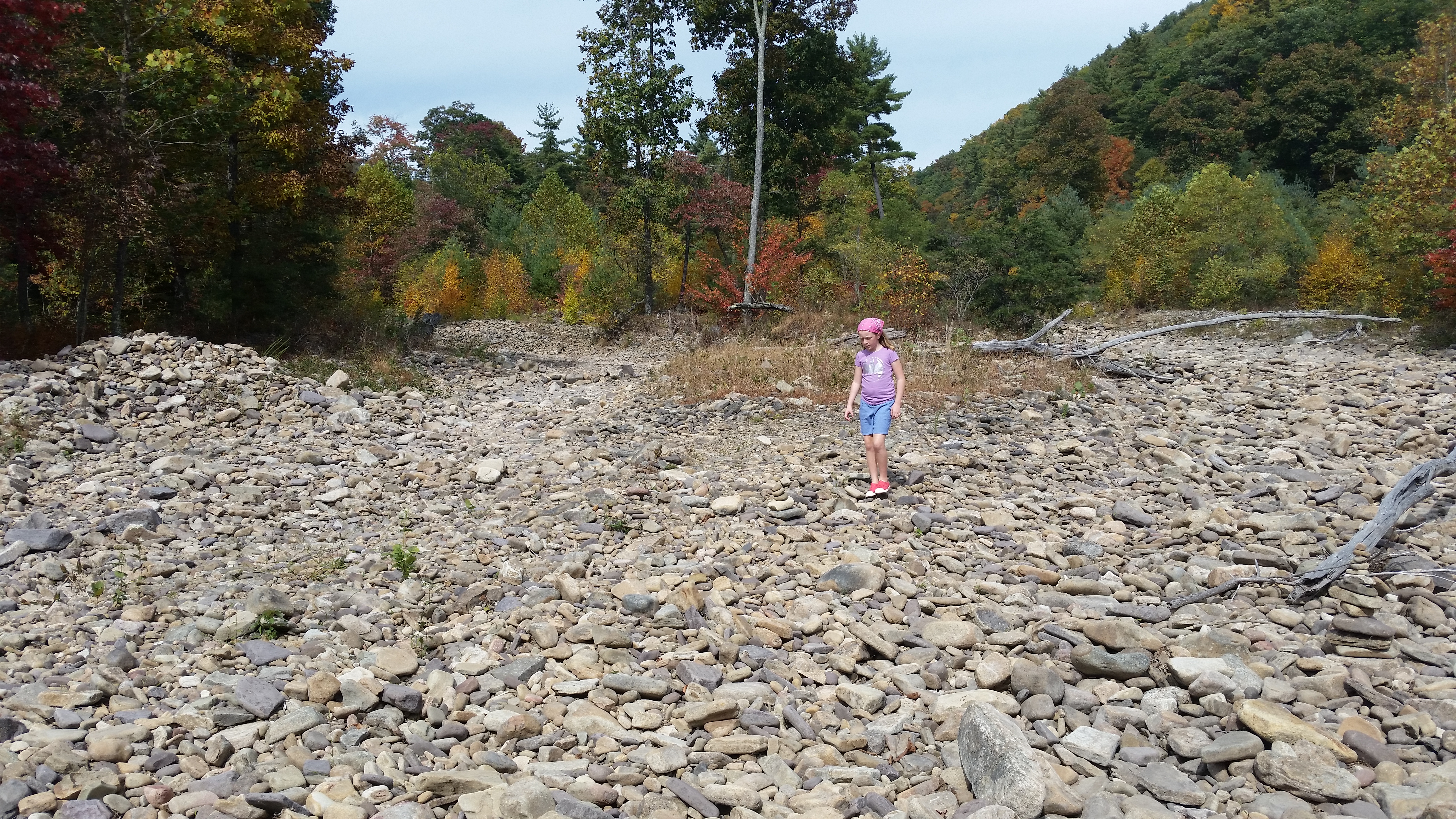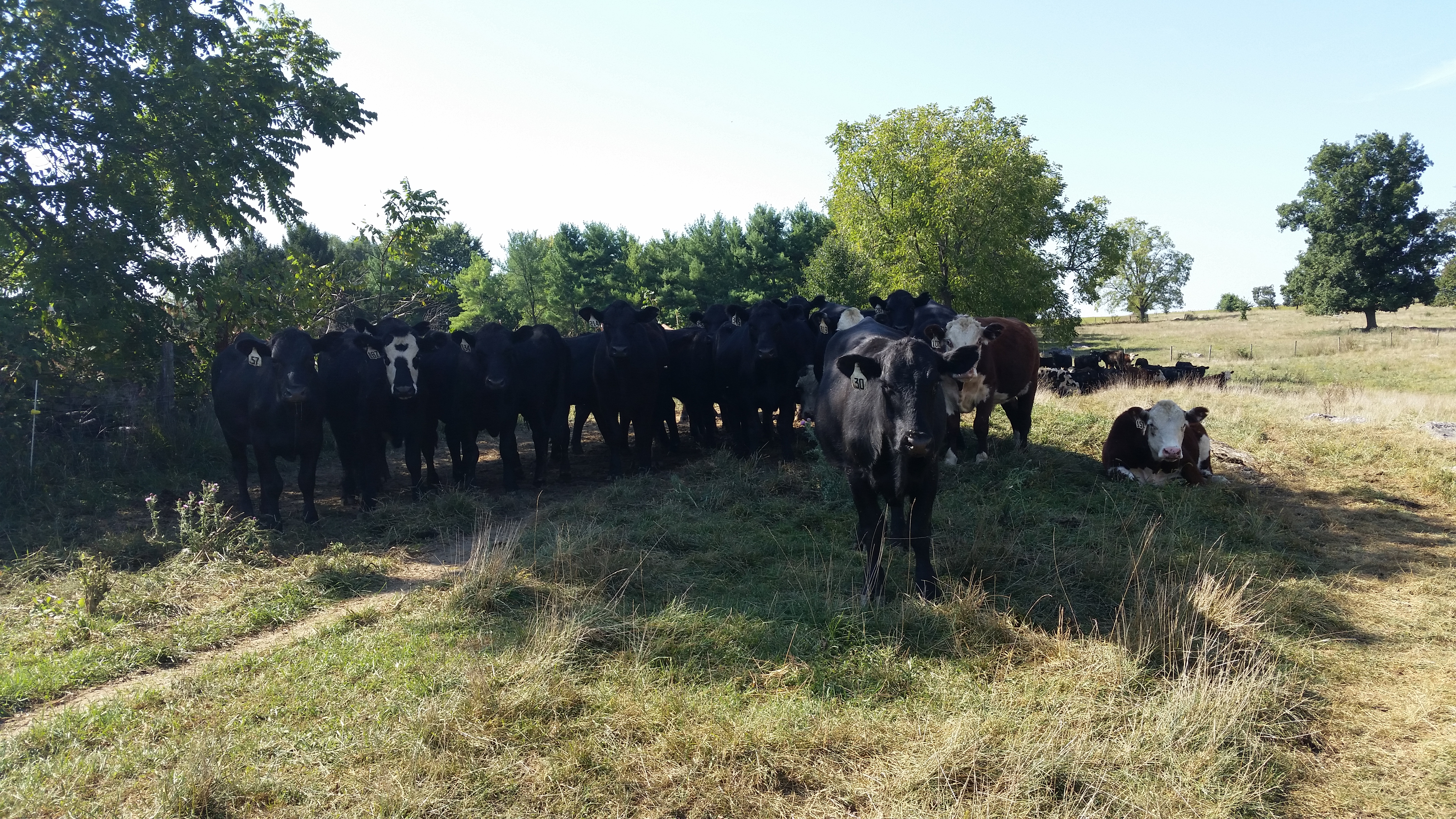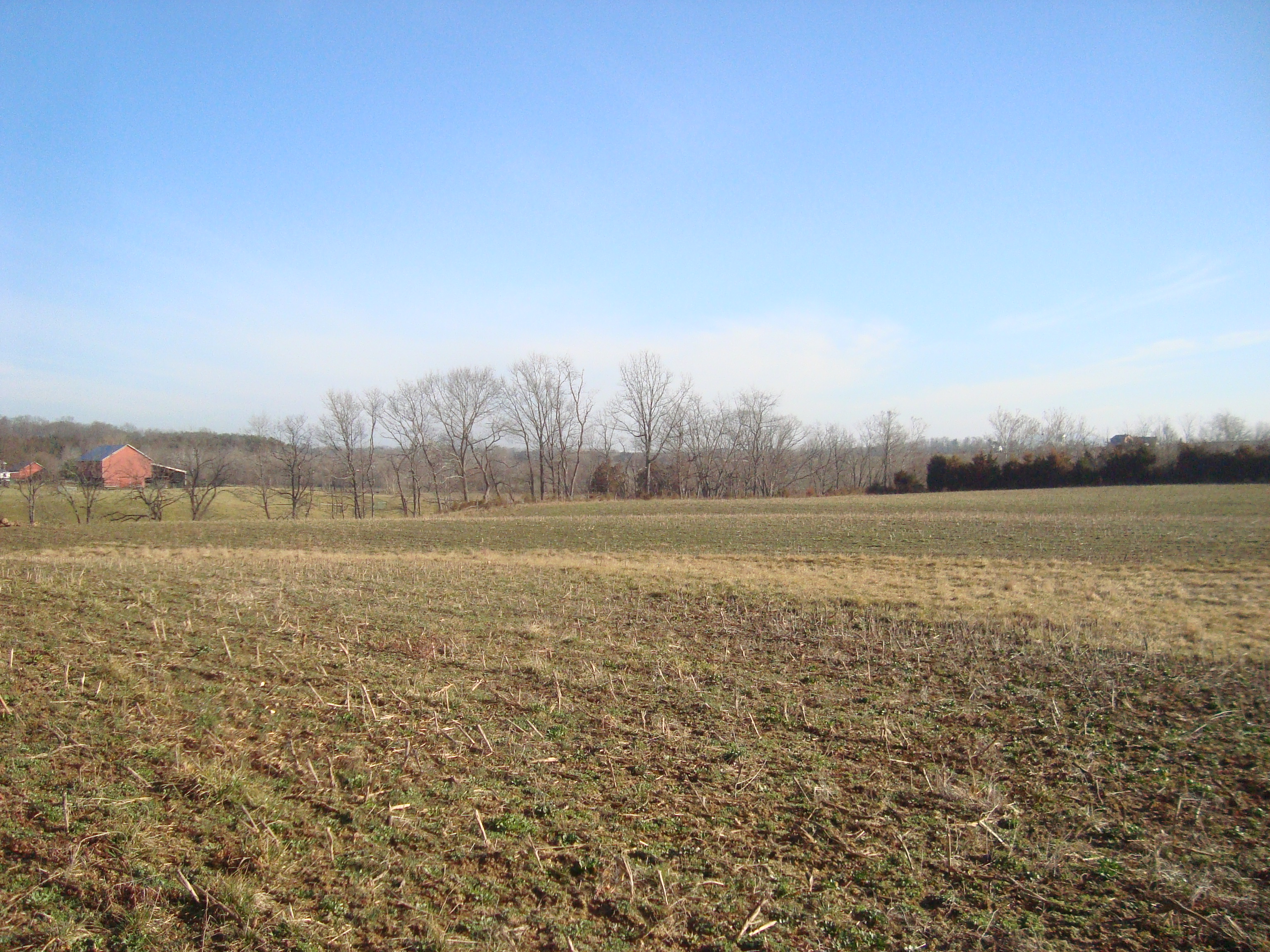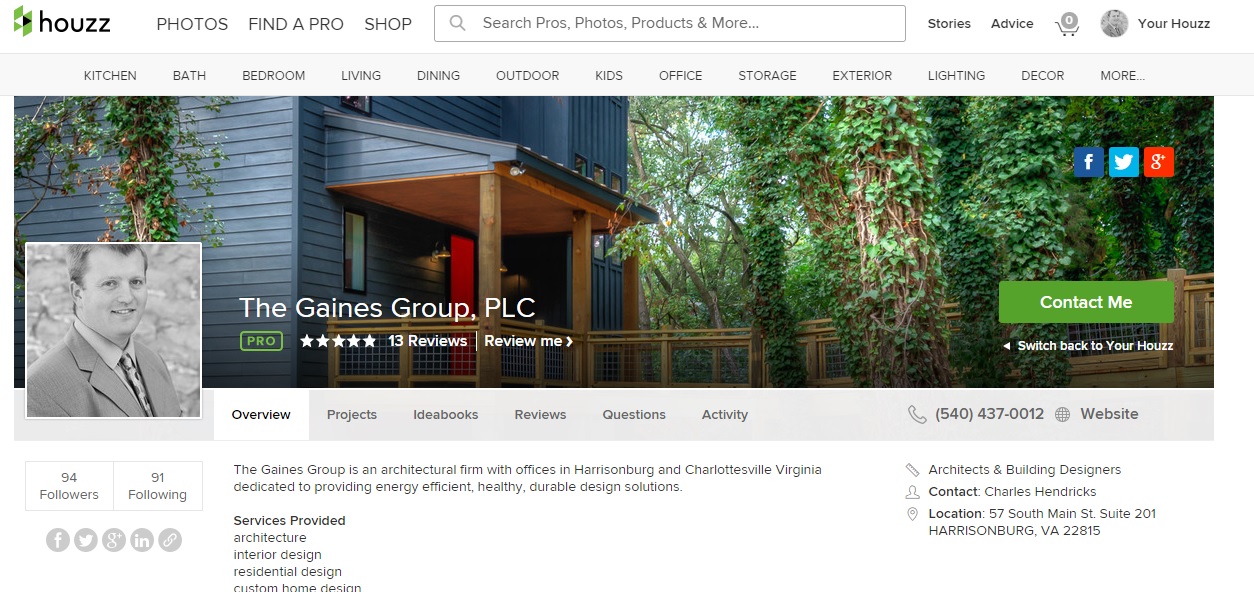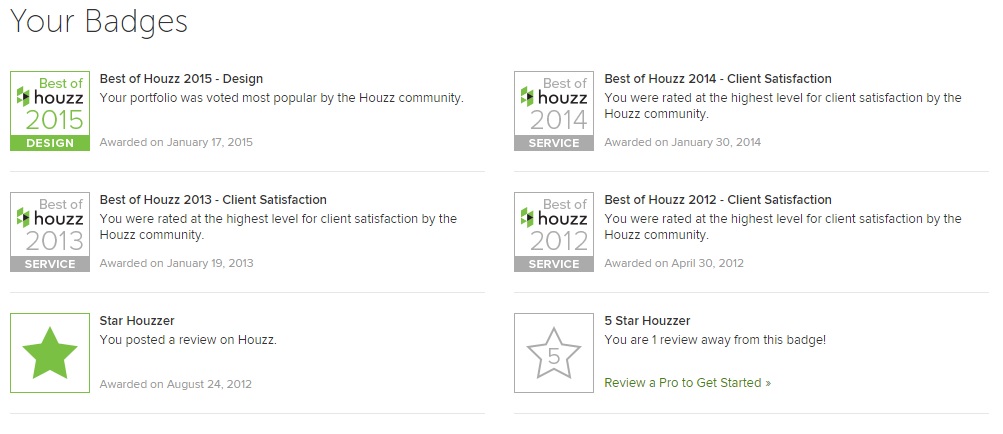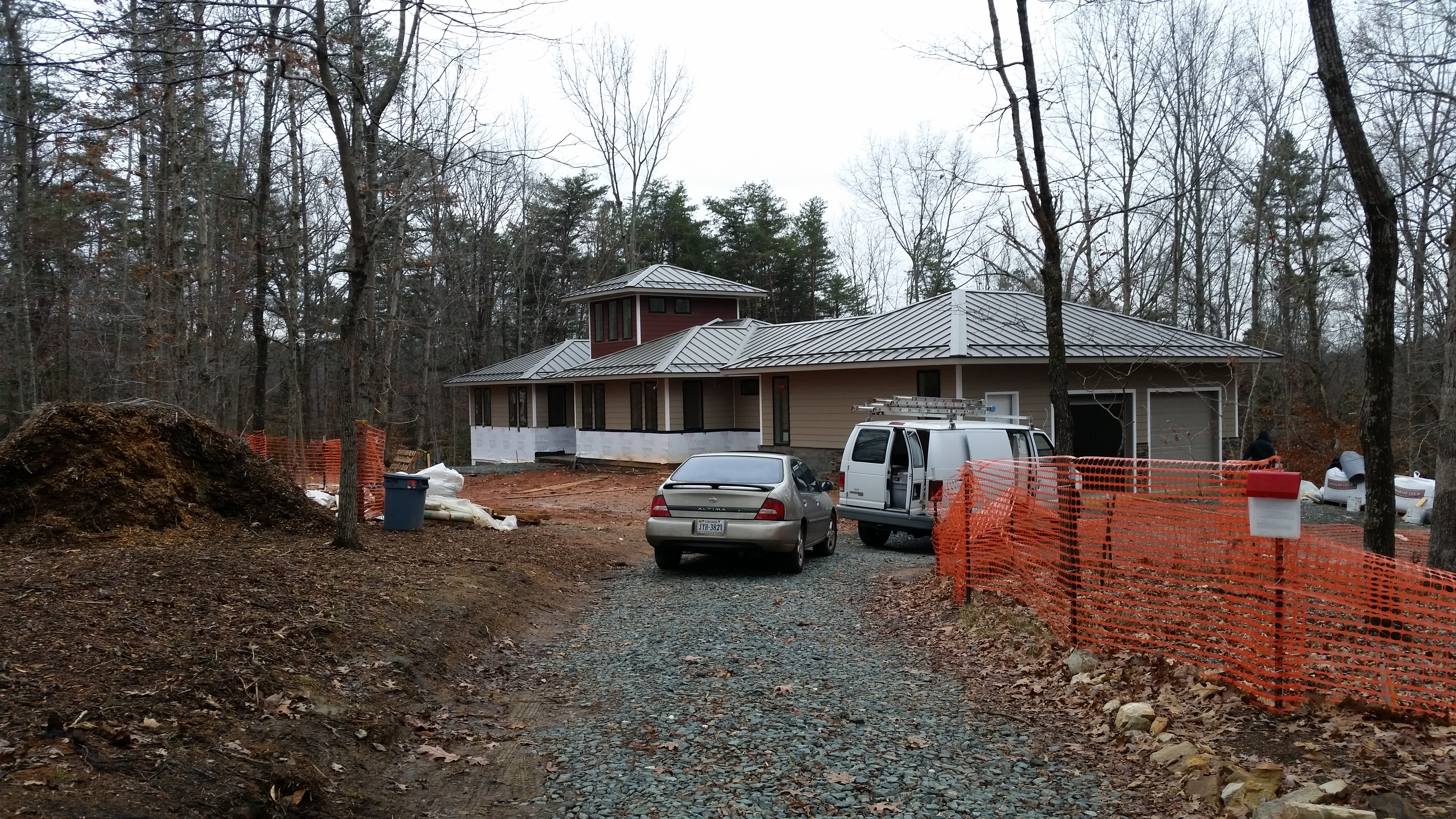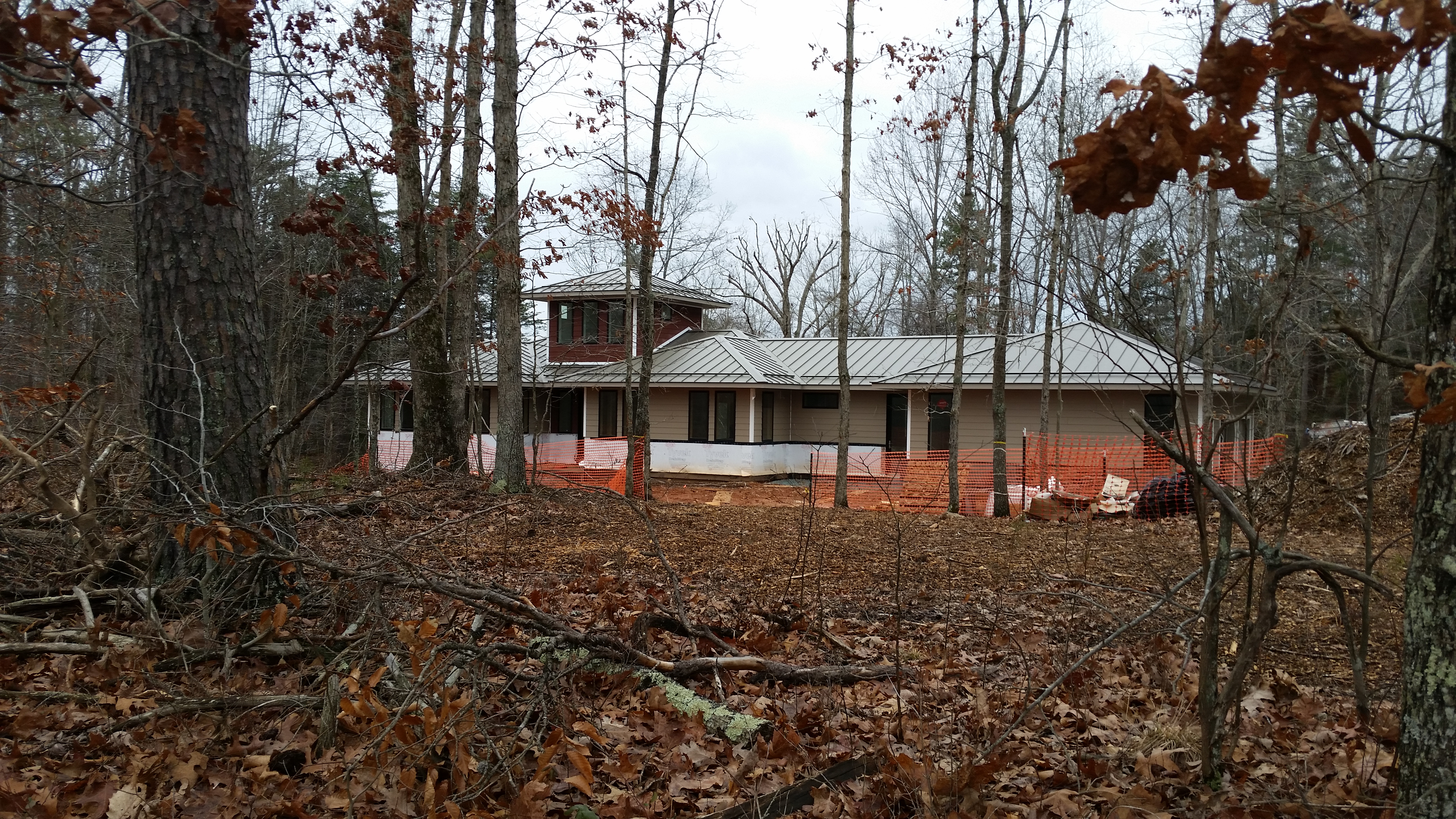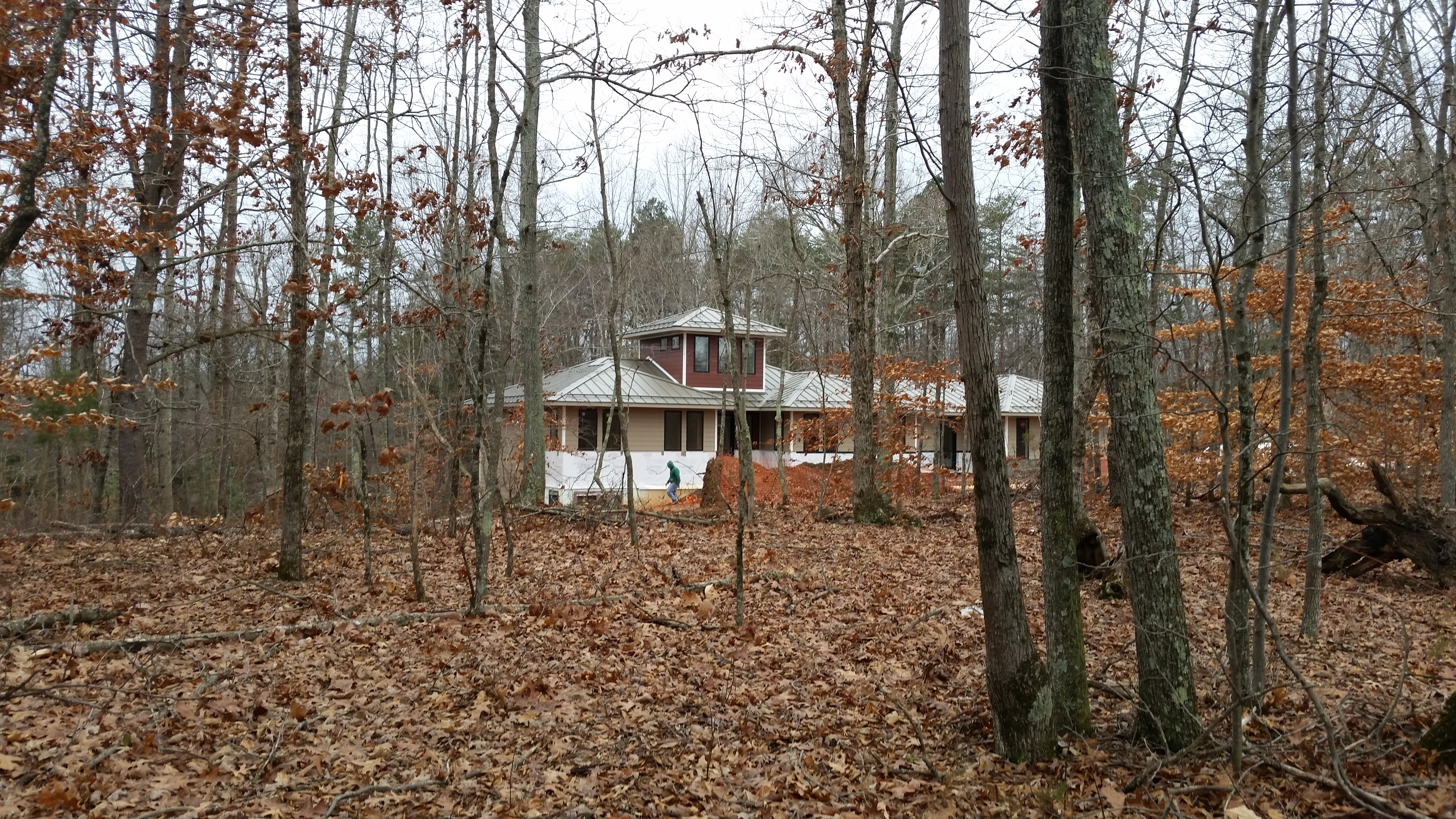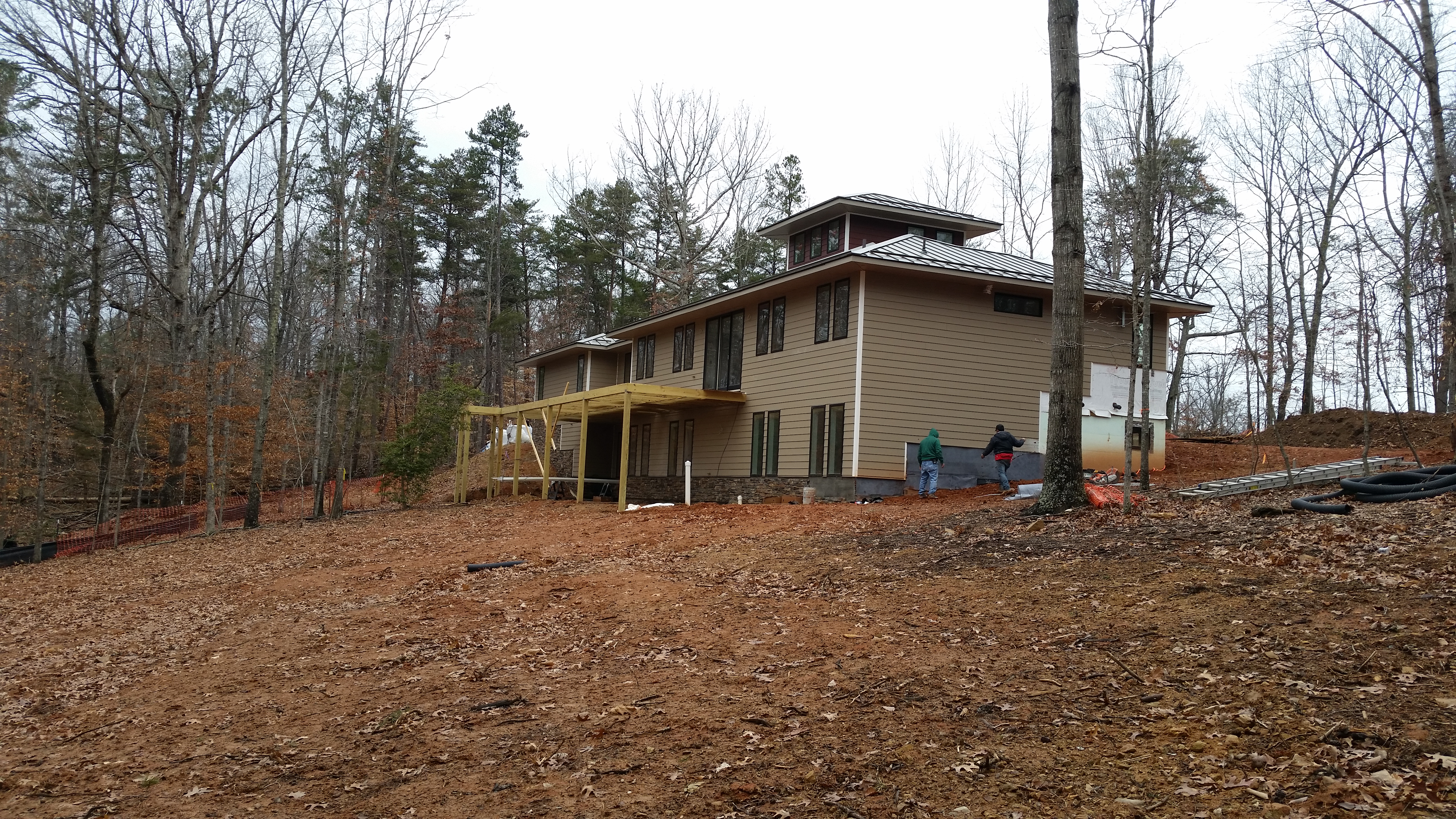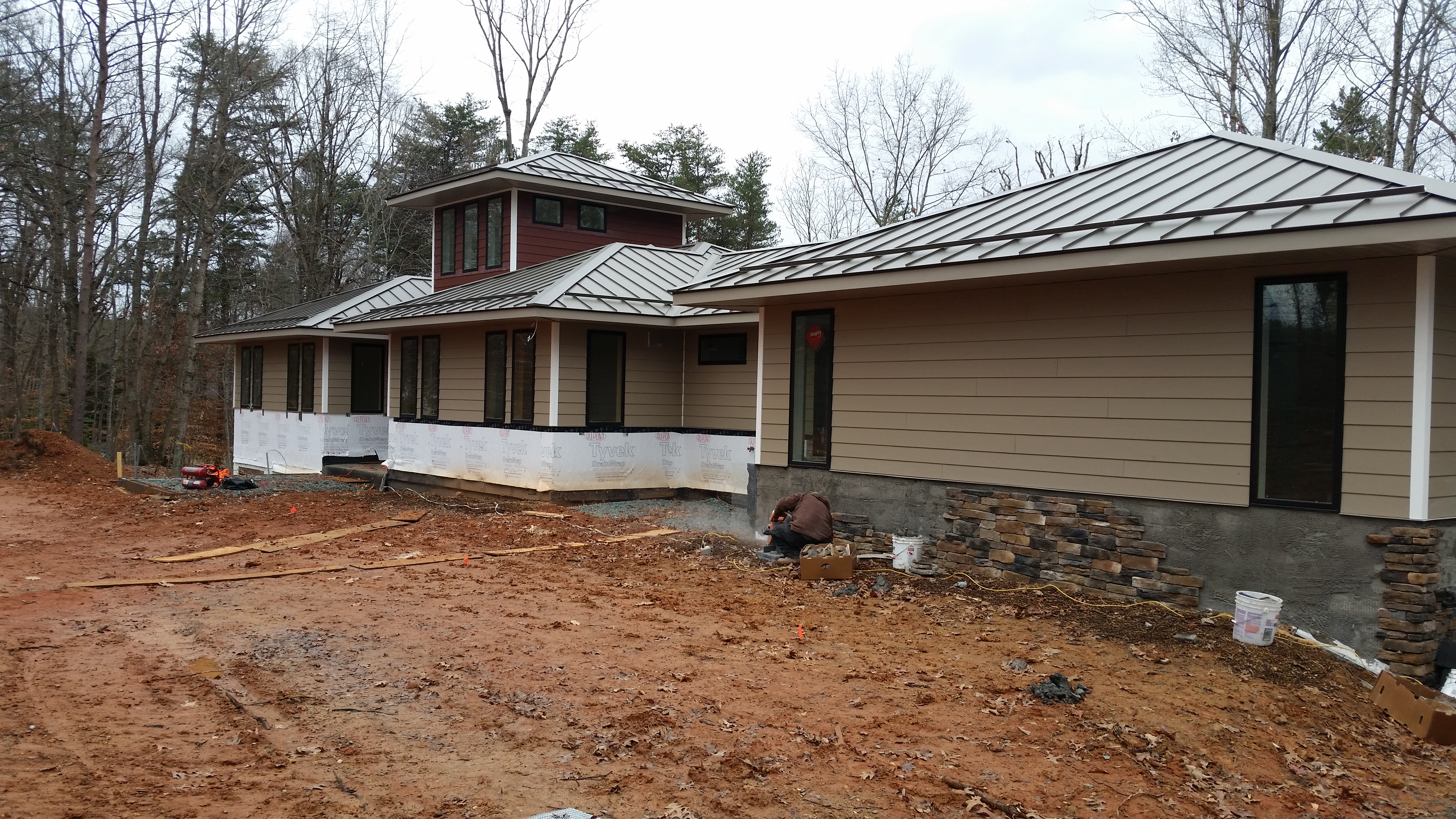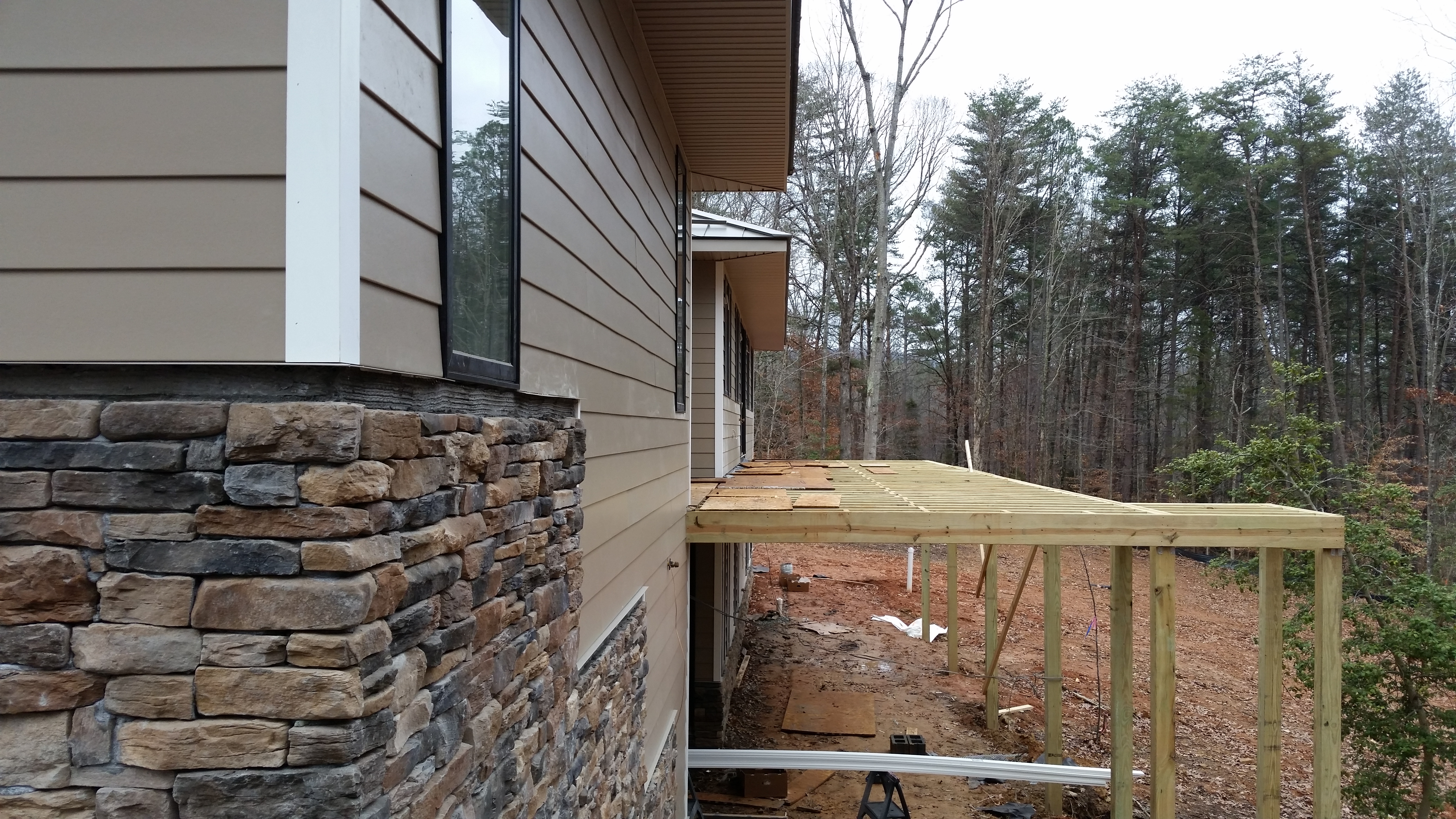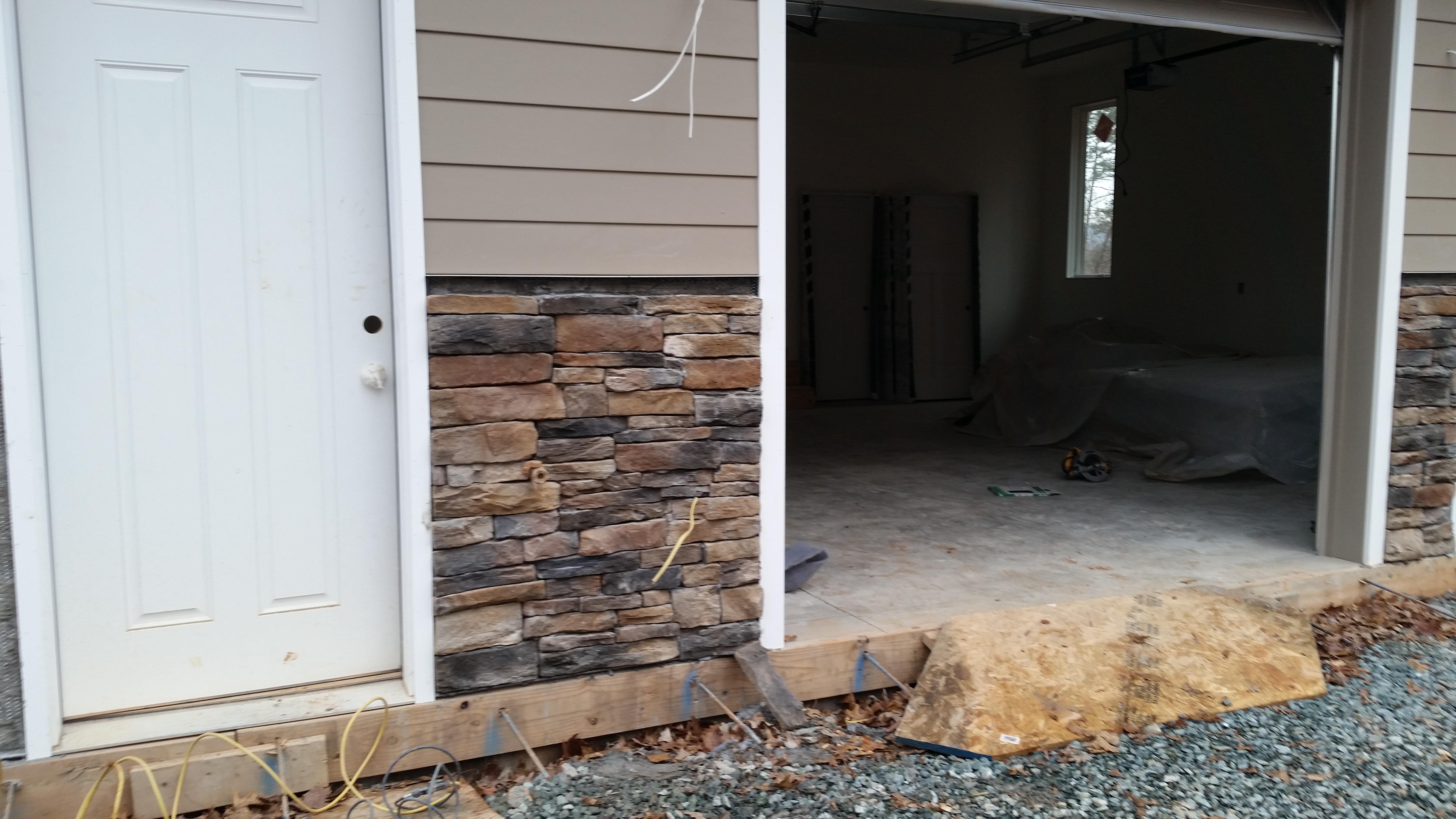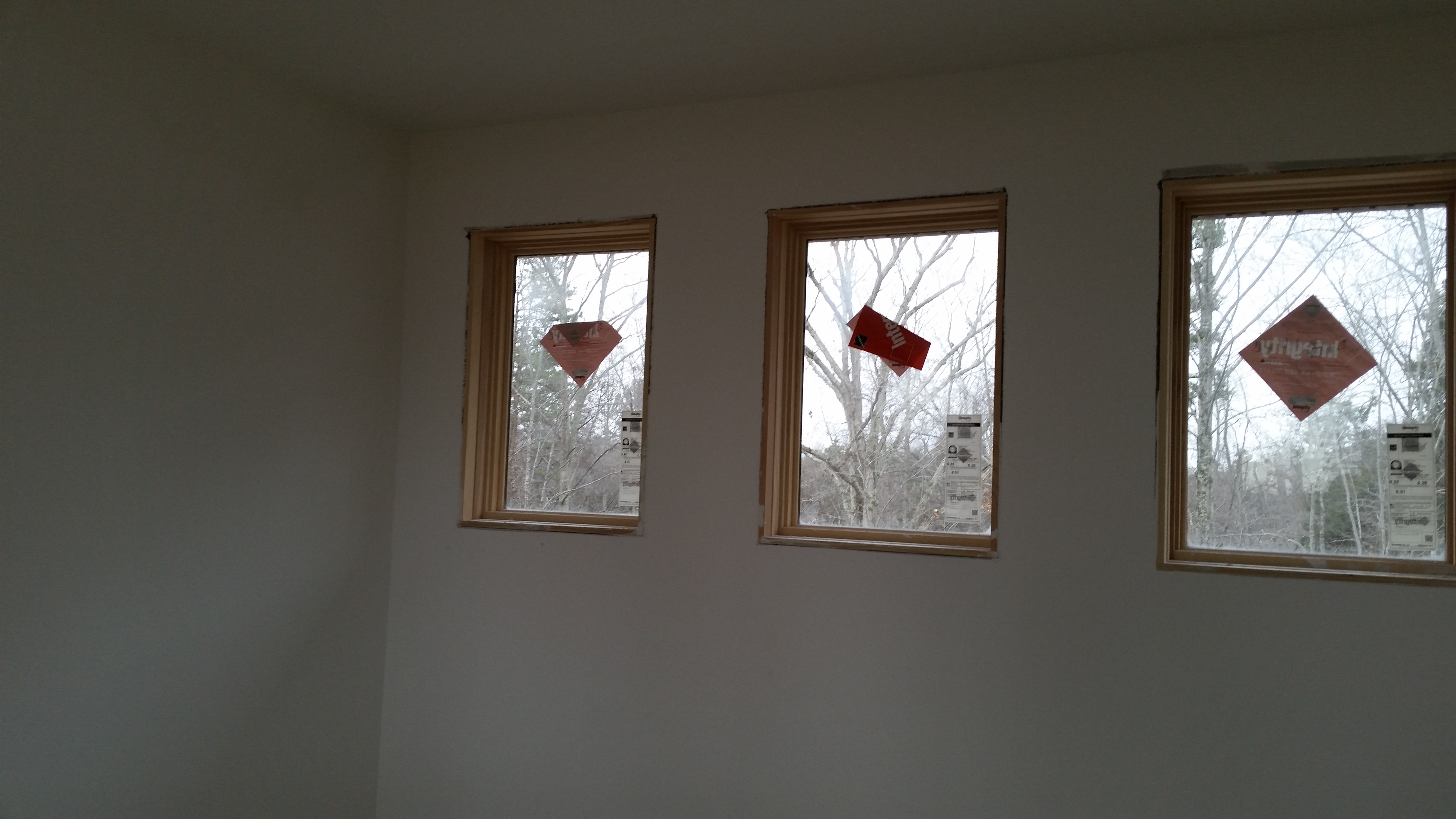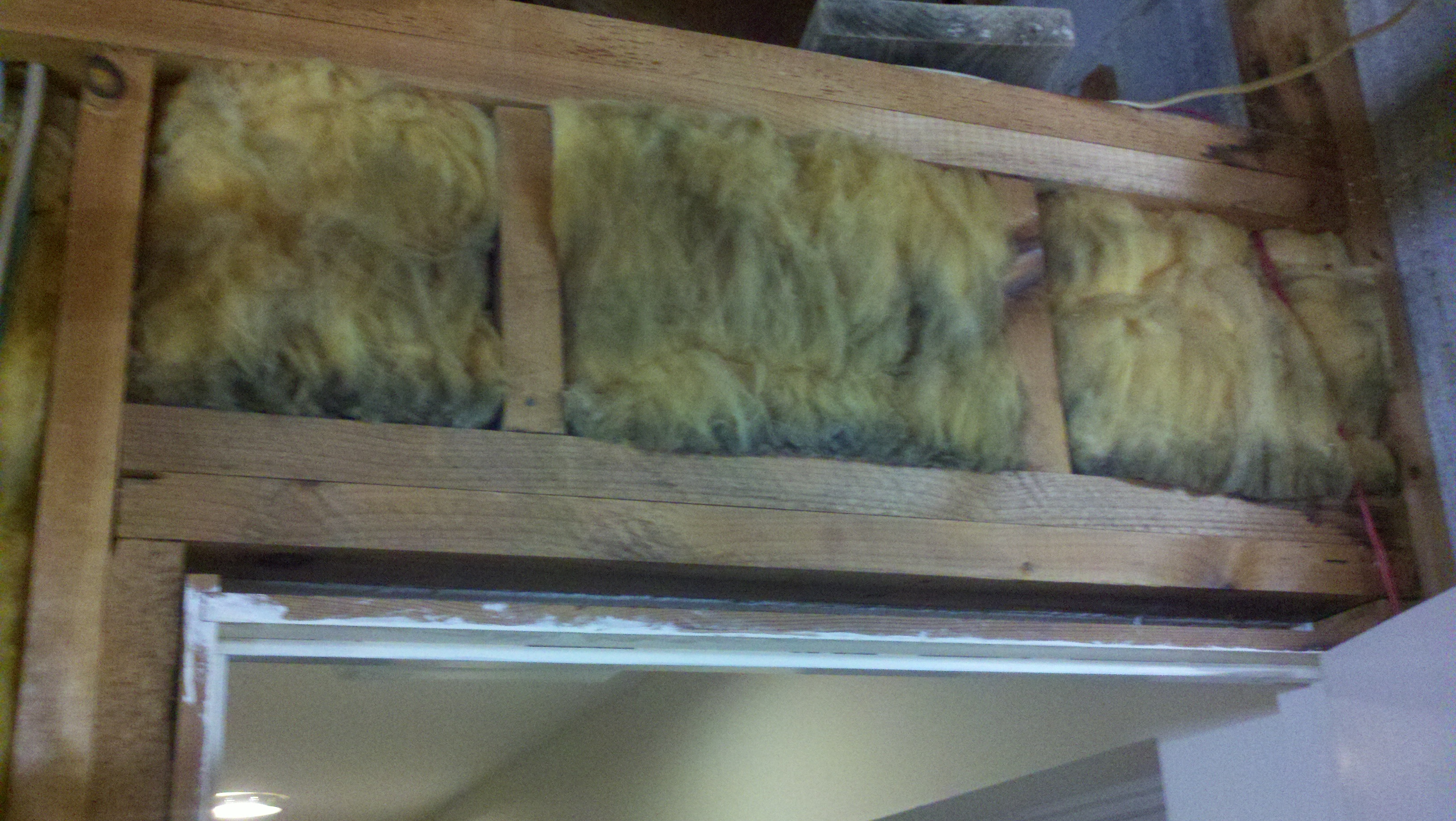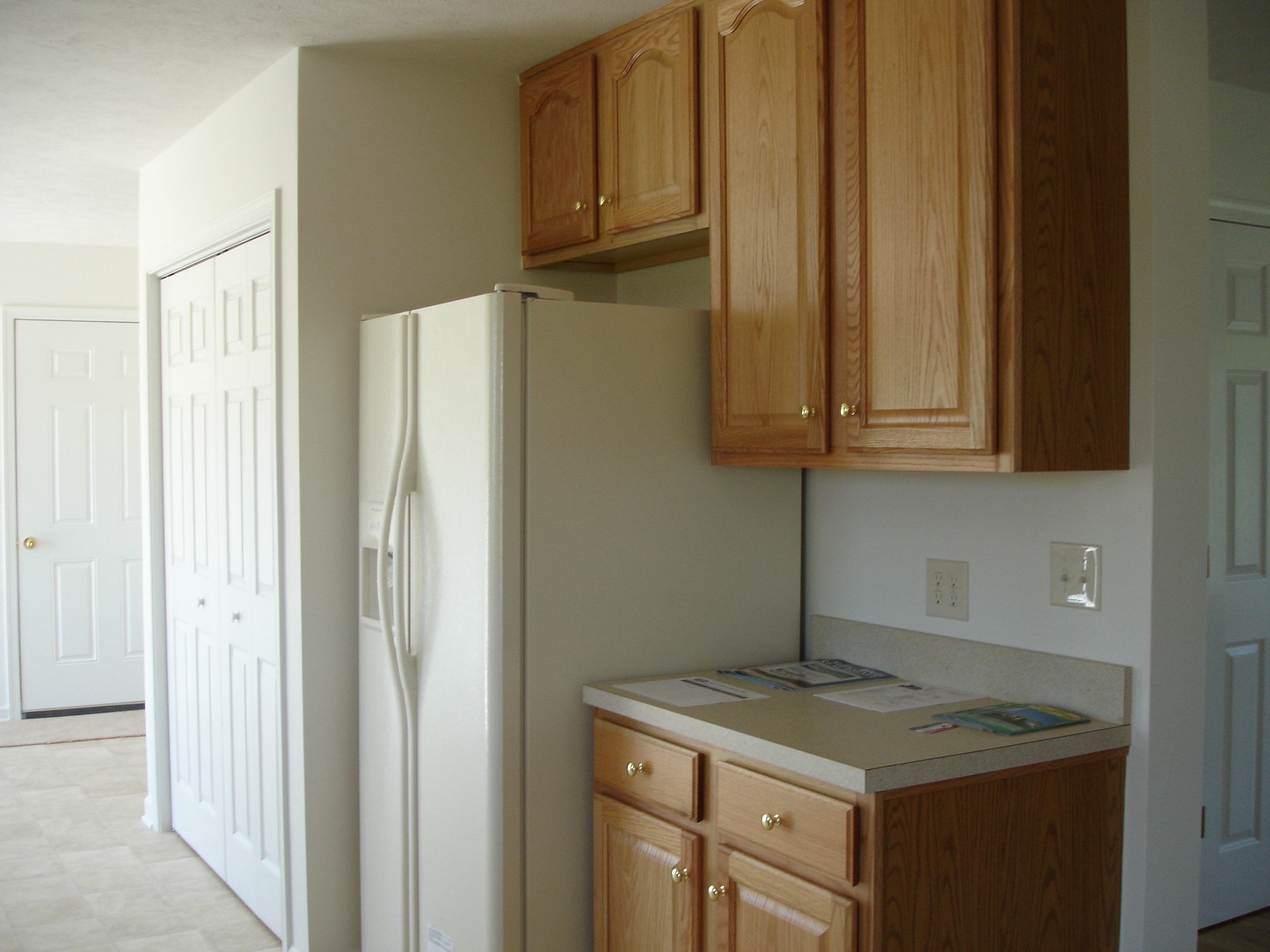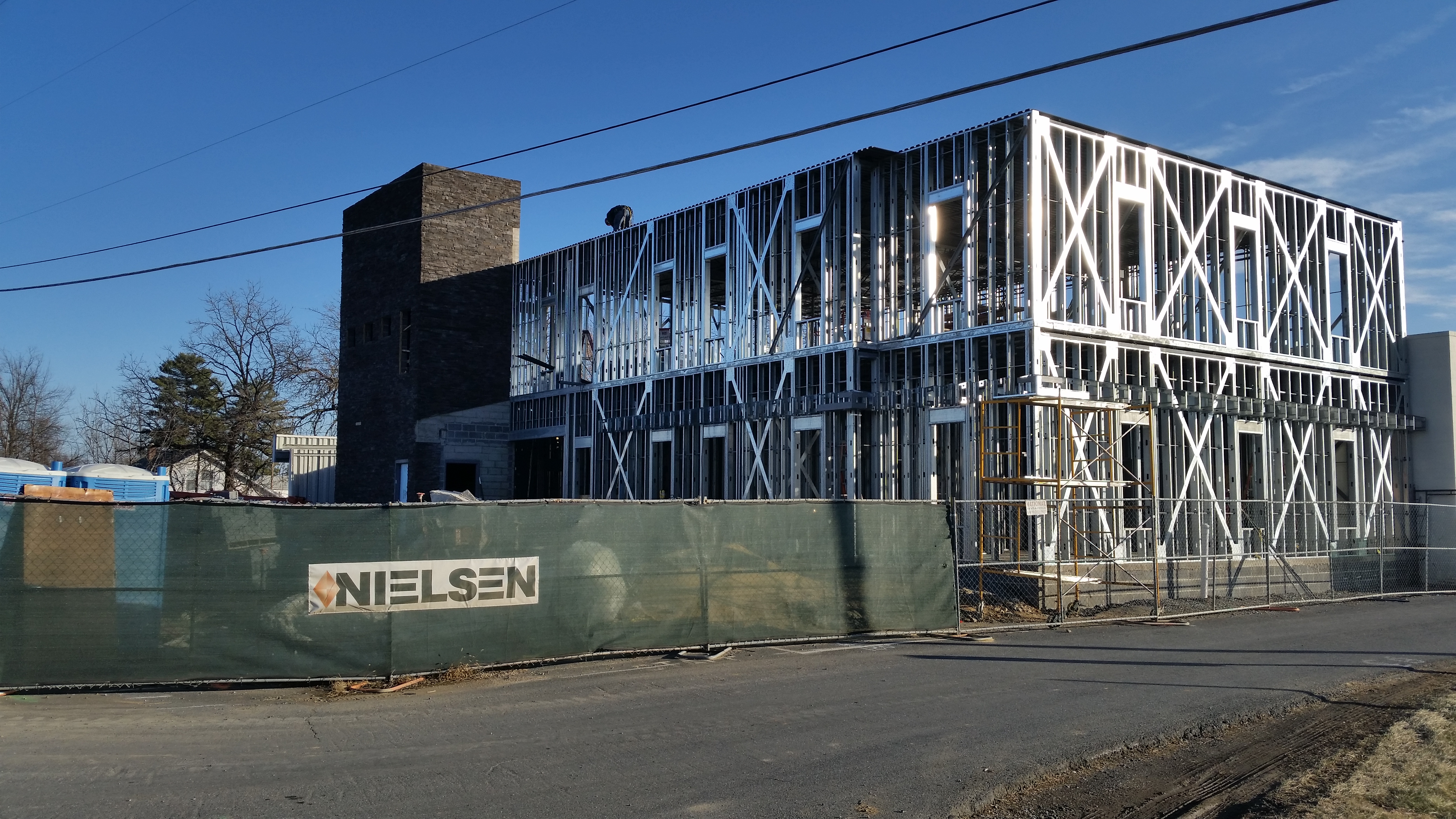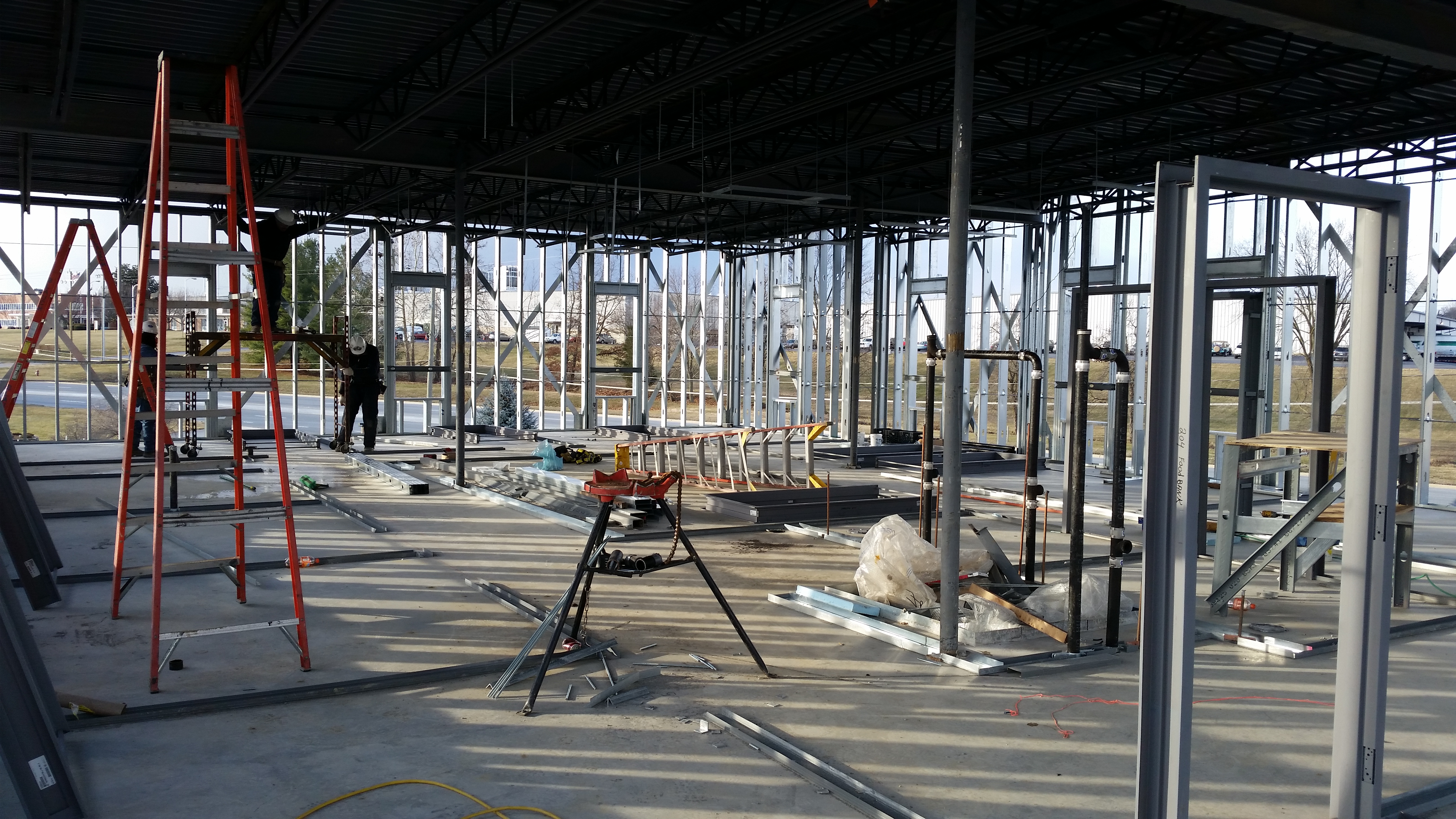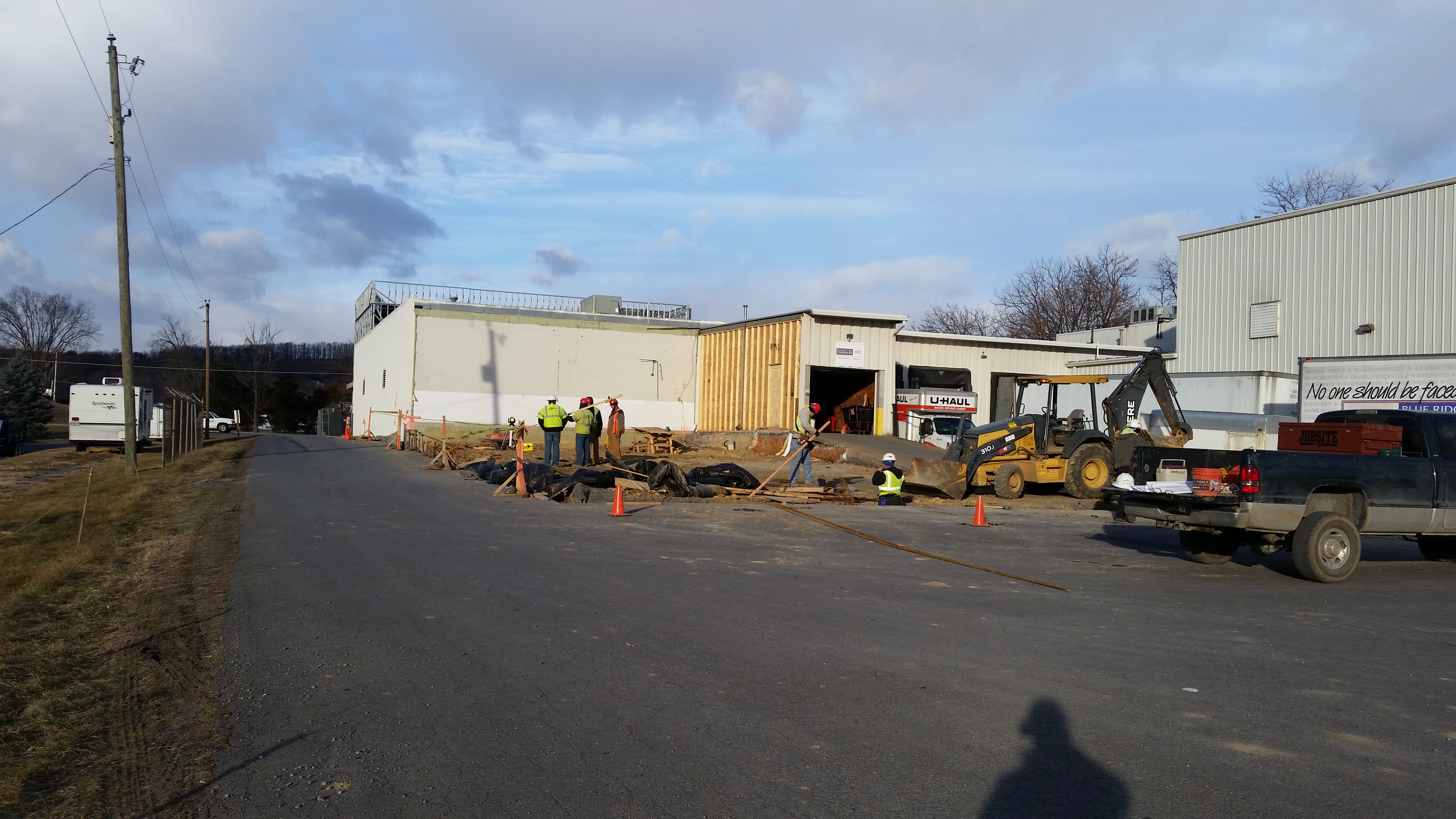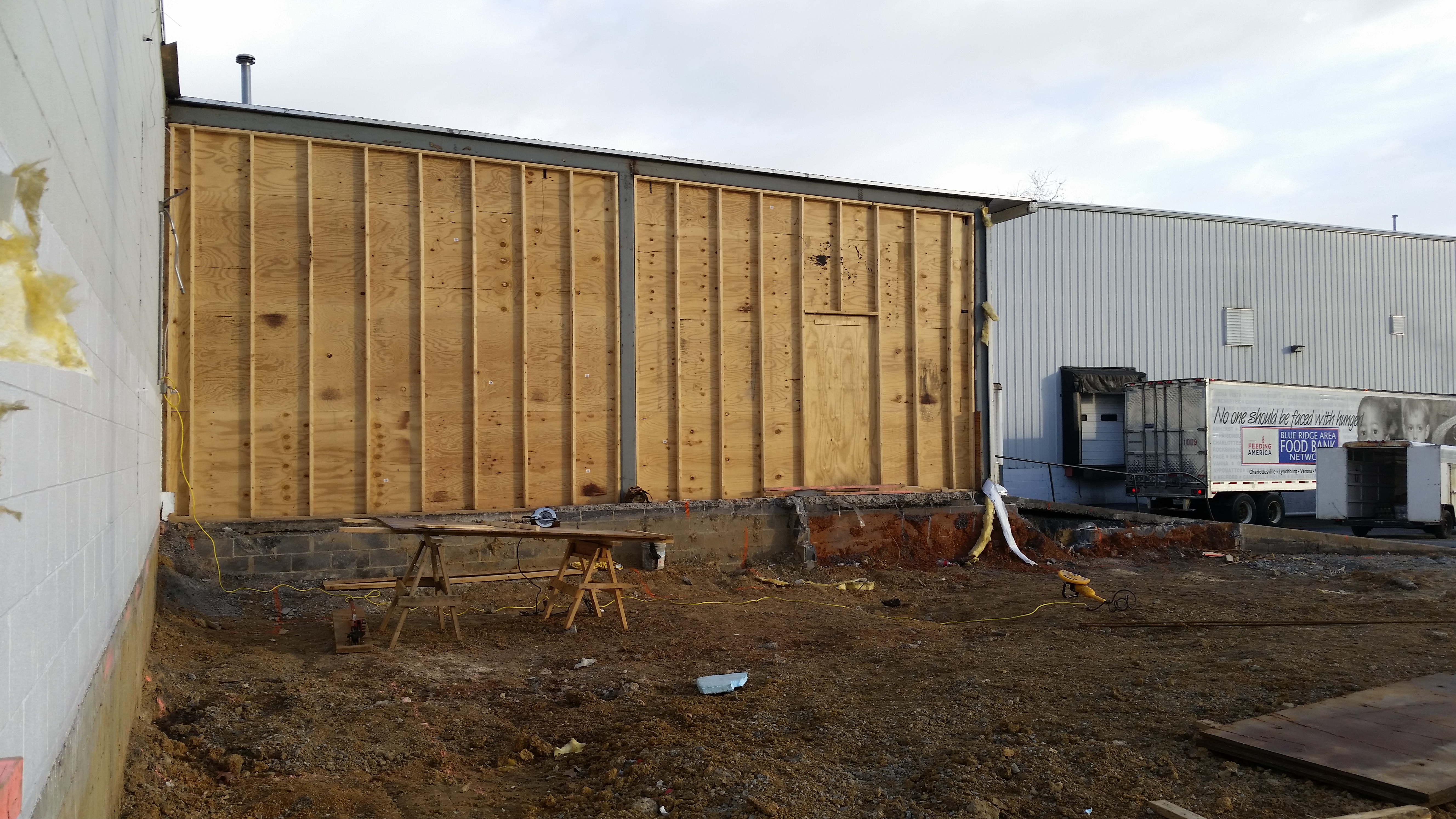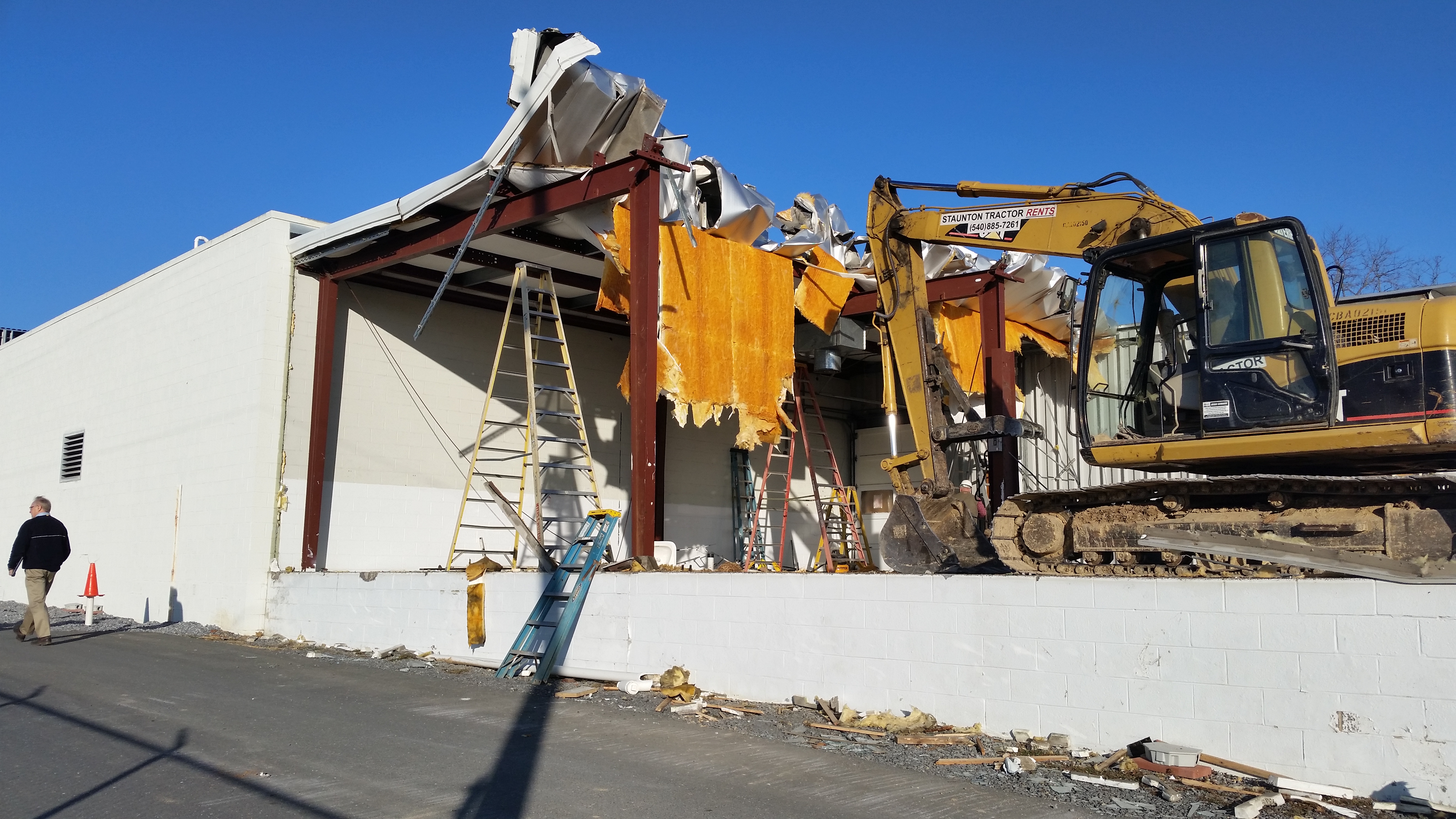by harrisonburgarchitect | Jan 28, 2015 | architecture, Harrisonburg Architect
We take a variety of approaches for our custom home projects. On the Smithland Road Custom Home, we worked for the builder, AM Yoder and Co and had a limited number of interactions with the client during design. We are only observing on occasion during construction as our services were for design only.
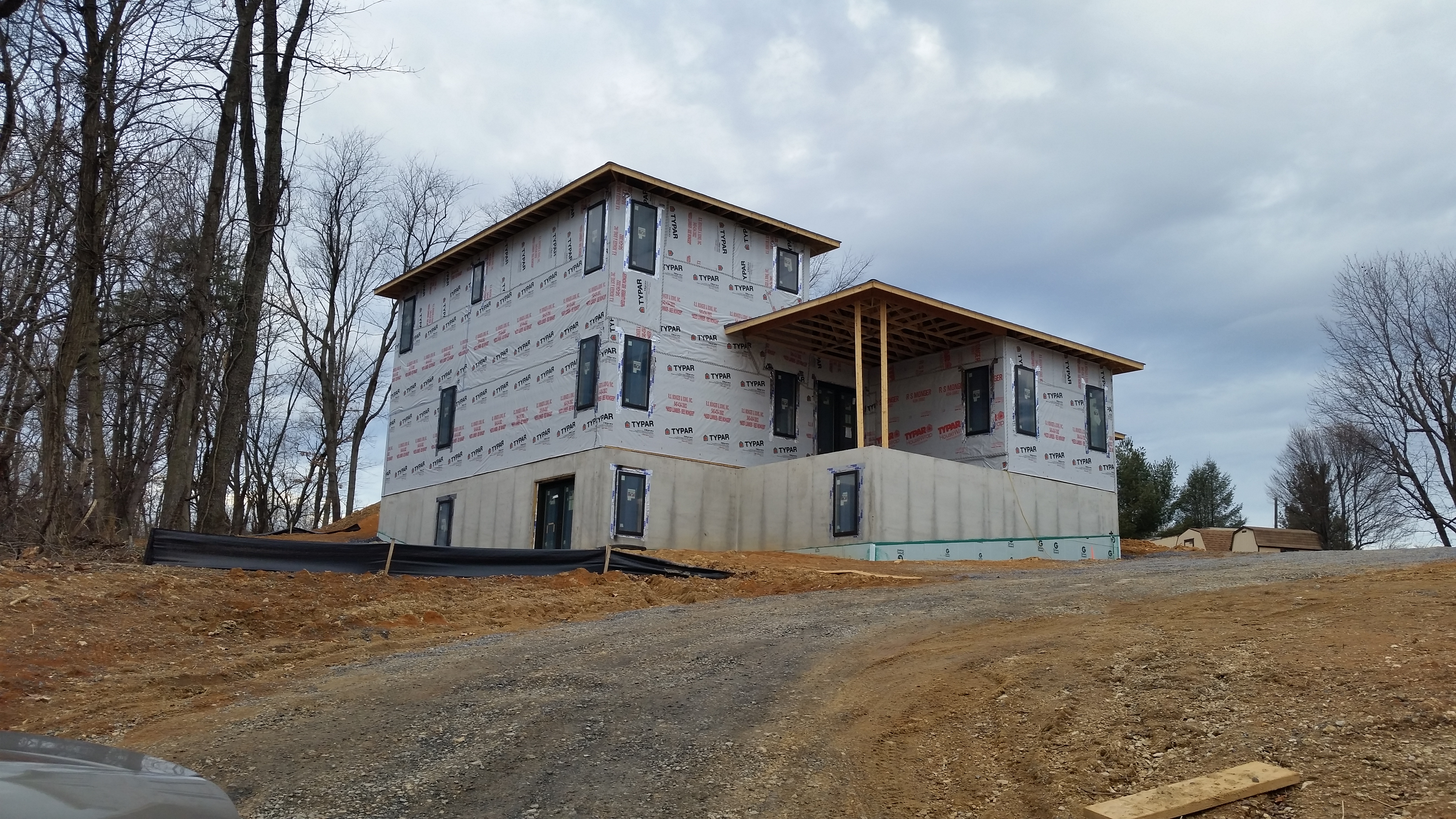

The design-build approach on this project was used to offer the clients a one-stop-shop for their custom home. This certainly simplifies the process of design for the builder’s clients. However, it requires a very high level of communication as the builder is often communicating design intent vs desire between parties.
Walking the site this past week, I noticed that several design changes had been made from the final version I submitted. The grade at the front of the home is much lower than I expected (the house is closer to the road which forced this decision), the back wall has more glass, and the fireplace was moved. I judge a project as successful if the client is happy with their dream home. Design changes during construction happen in all projects – it is fun to see what happens when I am no longer part of the conversation.


by harrisonburgarchitect | Jan 26, 2015 | architecture, Harrisonburg Architect
Erosion is the removal of soil and rock by water from one location to another. Erosion is also when wind moves soil from one location to another.



Erosion is a natural process, although human activity can have an increased impact on the rate at which is occurs. Excessive erosion impacts soil quality, stream and river issues, and airborne dust pollution.


The most effective method to prevent erosion is vegetative cover. Other strategies that work are limiting livestock from walking into streams and rivers, terracing, windbreaks, stream restoration, and crop rotation.


by harrisonburgarchitect | Jan 25, 2015 | architecture, Harrisonburg Architect
The Gaines Group, PLC of Harrisonburg, VA Receives “Best Of Houzz 2015 Award”

Over 25 Million Monthly Unique Users Rated Top-Rated Home Building, Remodeling and Design Professionals in the United States and Around the World
Harrisonburg, Virginia, January 25, 2015 – The Gaines Group, PLC of Charlottesville and Harrisonburg Virginia has been awarded “Best Of Houzz” for Design by Houzz, the leading platform for home remodeling and design. The 28 year old architectural firm was chosen by the more than 25 million monthly unique users that comprise the Houzz community from among more than 500,000 active home building, remodeling and design industry professionals.
The Best Of Houzz award is given in two categories: Design and Customer Satisfaction. Design award winners’ work was the most popular among the more than 25 million monthly users on Houzz, known as “Houzzers.” Customer Satisfaction honors are determined by a variety of factors, including the number and quality of client reviews a professional received in 2014. Winners will receive a “Best Of Houzz 2015” badge on their profiles, helping Houzz users around the world who discover and love a professional’s work to learn even more about that business’ popularity and satisfaction rating among their peers in the Houzz community.

The Gaines Group, PLC is thrilled to be included in this elite list of “Best of Houzz” 2015 Design Award winners. Principal, Charles Hendricks states: “Our projects are a direct result of working with great clients that want creative, energy-efficient, healthy, and durable design solutions.”
“Houzz provides homeowners with a 360 degree view of home building, remodeling and design industry professionals, empowering them to engage the right people and products for their project,” said Liza Hausman, vice president of industry marketing for Houzz. “We’re delighted to recognize The Gaines Group, PLC among our “Best Of” professionals as judged by our community of homeowners and design enthusiasts who are actively remodeling and decorating their homes.”
Follow The Gaines Group, PLC on Houzz http://www.houzz.com/pro/charlottesvillearchitect/__public
About The Gaines Group, PLC
The Gaines Group, PLC is an architectural firm that specializes in common sense solutions that add value to your project through energy-efficient, durable, and healthy designs. With 28 years of experience in Virginia, this award-winning architecture firm works hard to deliver excellent service at an affordable price. With offices in Charlottesville and Harrisonburg, the Gaines Group can serve your design needs anywhere in Virginia, Pennsylvania, or North Carolina. Constantly looking for the best answer, they work tirelessly staying on top of latest trends and best practices in the construction industry.
About Houzz
Houzz is the leading platform for home remodeling and design, providing people with everything they need to improve their homes from start to finish – online or from a mobile device. From decorating a room to building a custom home, Houzz connects millions of homeowners, home design enthusiasts and home improvement professionals across the country and around the world. With the largest residential design database in the world and a vibrant community powered by social tools, Houzz is the easiest way for people to find inspiration, get advice, buy products and hire the professionals they need to help turn their ideas into reality. Headquartered in Palo Alto, CA, Houzz also has international offices in London, Berlin and Sydney. For more information, visit www.houzz.com
# # #
by harrisonburgarchitect | Jan 21, 2015 | architecture, Harrisonburg Architect
Work continues on this house designed for a lifetime in Northern Albemarle County just north of Charlottesville. From the no-step entry to the high-performance design elements, careful thought was put into this design solution.

Careful consideration was made to set this home on the site in a way that it blends with the surroundings. The colors are pulled from nature and the slope of the land dictated the location of the home. Working with the talented Jessica Primm for landscaping solutions and David Collins for grade modifications were key elements to getting it all just right for location, views, and accessibility.




The exterior materials are intended to be low maintenance to reduce the time needed to maintain this home over the years. From cementitious siding, simulated stone, to the metal roof, this home will not require much work on the weekend.


The interior has framed views throughout including the loft space which has the feeling of being in a tree house.

To see more about his house click here.
by harrisonburgarchitect | Jan 19, 2015 | Building Science, Harrisonburg Architect
Formaldehyde: A gas used widely in production of adhesives, plastics, preservatives, and fabric treatments and commonly emitted by indoor materials that are made with its compounds. It is highly irritating if inhaled and is now listed as a probable human carcinogen.

Some products that you might expect to contain formaldehyde in your home include paper towels, shampoo, deodorant, lipstick, baby wipes, toothpaste, body wash, and nail polish. It can also be found in building products including pressed wood produces (cabinets for instance), plywood, resins (used in wall paper), glues, latex paint, insulation, and carpet.

Exposure to high levels of Formaldehyde may cause asthma attacks, nausea, watery eyes, difficulty breathing, headaches, and respiratory irritation.
Formaldehyde, according to the Department of Health and Human Services, has been shown to cause cancer in animals.
by harrisonburgarchitect | Jan 14, 2015 | Building Science, Harrisonburg Architect
The work continues at the Blue Ridge Area Food Bank in Verona even with the cold weather. We have gone from old farm-house to no building to finally a new office taking shape. In the rear you can now see where the warehouse addition will take shape as demolition has started.

Inside the building office spaces are starting to take shape.

In the rear, demolition has started and the footings have been poured.





